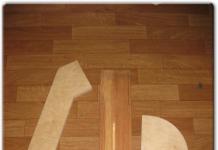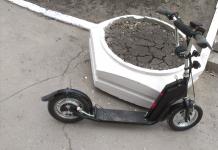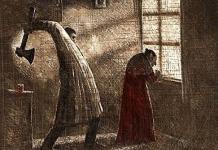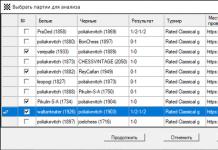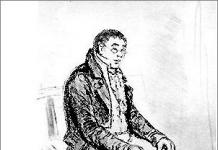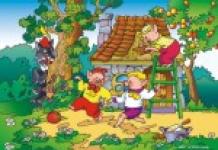Activity.
History
The oldest types of felling were mines and forced-selective, in which the best trees were harvested, and the worst were left to grow further. They led to the depletion of forests and the replacement of valuable types of wood with low-value ones. This system of felling existed in the taiga part of Russia until the 30s of the XX century, and gave way to other types of felling only in connection with an increase in industry demand for small-sized timber and depletion of forests. Currently, neither mining nor forced-selective felling is officially used.
Clear cut have as long a history as the forced-selective. They were originally used around the old industrial centers of metallurgy, which needed charcoal. Up to the 30s of the XX century. clearcuts were carried out only around large cities and in densely populated areas of the southern taiga, where any wood was used. In the greater part of the middle and northern taiga, from where it was more profitable to export or float the most valuable trunks, forced-selective or mining felling was used. Since the 30s of the XX century. clearcuts have become the main method of timber harvesting in Russian forests and remain so to this day.
However, it was not so profitable for the timber merchants to cut down and take out absolutely all the trees, and they left the worst ones in the felling - of low-value species, damaged and sick. This system is called conditionally clear cut... Officially, this type of felling was legalized and introduced into the practice of logging in 1926. In today's Russia, it is not formally used, but in reality, many clearcuts in the taiga zone still have the character of conditionally clear felling.
The ideas of conducting "correct" forestry appeared in Russia in the 18th century. Thanks to them, for example, appeared voluntary selective felling, in which the best trees were left in the forest - with a large increase and capable of leaving good offspring. Such felling is primarily aimed not at obtaining timber, but at forming a healthy, highly productive forest. Unfortunately, this felling has not yet become widespread due to significantly lower profits from its implementation. Gradual fellings received extremely limited distribution for the same reasons as voluntary selective felling.
As a result of the significant depletion of forest resources in densely populated areas at the end of the 19th century, a complex system emerged. thinning.
Felling process
Knotter
Harvester work
When felling by hand, the feller makes a cut (undercut) from the side of the tree where he is going to cut it, then goes to the opposite side and makes the main cut (cut), always leaving a small undercut, which does not allow the tree to turn around its longitudinal axis and does not allow him to slide off the stump. If a sawn tree falls on another standing tree, then it is pulled off by a tractor. Together with the feller, his assistant, a lumberjack, works. Further, the delimbing clippers, usually working in a group, are used to clean the trunk from branches and remove the top. Branching is permitted at a distance of at least 50 m from the felling site. Then the resulting whip can be crosscut by a link of workers consisting of: a scriber, a crossbar and 2-3 haulers.
In mechanized felling, the felling, knotting and crosscutting is done by a harvester, and the collection of assortments and skidding is done by a forwarder.
The dynamic development of trade relations with the PRC after the collapse of the USSR entailed changes in forestry and the environmental situation in the Far East and Siberia. Observations of a similar process in Primorye allow us to conclude: the volume of felling is many times greater than the permitted and declared. This has raised concerns about the World Wildlife Fund. Chinese-owned sawmills and lumber yards play a key role in the spread of illegal logging (page 17).
The authorities in the Russian Federation do not prohibit the export of untreated timber, which, according to the journalist of the Komsomolskaya Pravda newspaper, would contribute to the creation of jobs and the inflow of investments, the introduction of new technologies, and the improvement of the socio-economic situation in the border regions.
Classification
Final felling
Clear cut
Selective cuttings
Gradual fellings
- Gradual felling- final felling or reforestation, in which a ripe stand is cut down in a felling area in several steps during one or two age classes. Currently, according to the Timber Harvesting Rules, gradual felling is included in the category selective felling.
- Even-gradual felling- gradual felling, in which the stand of the same age class is cut down in 2-4 steps by successive uniform thinning. At the same time, plantations of trees of the second age class and undergrowth are being formed.
Also, uniformly gradual felling is carried out in high and medium-dense stands with depressed viable undergrowth or the second layer, in mixed stands formed by tree species with different ripeness ages (coniferous-deciduous, aspen-birch, etc.).
The density of the stand at the first felling is reduced to 0.5. In the absence or shortage of undergrowth, other reforestation measures are additionally applied. - Group gradual felling- gradual felling, in which the stand is cut down in groups in several steps in places where there are clumps of undergrowth. It is carried out in a stands of the same age for two age classes.
- Hollow cuttings- variety group-gradual felling, in which the ripe part of the stand is cut down within 30-40 years in 3-5 steps by hollows in places where there are clumps of undergrowth. The size of the basin is from 0.01 to 1 hectare.
Usually, the original hollows are cut in the form of an oval or narrow strip. Several seed years are used, the new generation of the forest is created with different ages. With hollow felling, conditions are created for the renewal of mixed forest and its protective functions are preserved.
- Hollow cuttings- variety group-gradual felling, in which the ripe part of the stand is cut down within 30-40 years in 3-5 steps by hollows in places where there are clumps of undergrowth. The size of the basin is from 0.01 to 1 hectare.
- Long-term gradual felling- gradual felling, carried out in stands of different ages in two stages, leaving for the second stage trees that have not reached maturity, which are cut down after they reach their operational size. At each step, 50-60% of the growing stock is removed. The relative density of the stand after the first felling should not be lower than 0.5 in dark coniferous and 0.4 in light coniferous stands. The second time is carried out in 30-40 years.
They create good conditions for natural forest regeneration (usually there are more than 10,000 pieces of viable coniferous undergrowth per 1 hectare); when they are carried out, it is not necessary to leave seed trees and carry out silvicultural care in the renewed plantation.
Such felling is advisable only in stands with at least 350-400 young and maturing trees per 1 ha on well-drained soils. They are used in coniferous plantations of Siberia and the Northern Urals; in the north and northwest of Russia, they are impractical due to poor soil drainage. - Gradual felling- the stand is cut down in 2-4 steps during one age class on strips alternating in a certain order with a width not exceeding the height of the stand; in oak forests - double the height of the stand, subject to the subsequent creation of oak forest plantations.
- Even-gradual felling- gradual felling, in which the stand of the same age class is cut down in 2-4 steps by successive uniform thinning. At the same time, plantations of trees of the second age class and undergrowth are being formed.
- Very weak - the volume of cut wood reaches 10% of its total stock.
- Weak - 11-20%.
- Moderate - 21-30%.
- Moderately high - 31-40%.
- High - 41-50%.
- Very high - 51-70%.
Selective felling of mature and over-mature forest stands are carried out with an intensity that ensures the formation of sustainable forest stands from the second layer and undergrowth. In this case, a part of ripe and overmature trees is cut down with the preservation of the second layer and undergrowth. The second tier includes trees with a height of 0.5 to 0.8 of the height of the first tier, with the exception of stunted (old) trees.
Types of felling not provided for by law
- Clear felling:
- rim - narrow-jaw felling, in which the stand is cut down in narrow strips 12-15 m wide and 150-300 m long - with edges. They are laid in the seed year, cutting down 20-25% of the stand. Due to the abundant fruiting of the parent stand, self-seeding appears under its canopy, which is protected by the side wall of the forest and the gradually thinning stand. In the border for self-seeding, favorable conditions are preserved: water, light and temperature conditions. Cutting, in addition to the border, can be supplemented by thinning the parent stand between the borders. Border felling is most consistent with the nature of the forest, provides natural renewal of the harvested areas. This type of felling was first used in Germany at the end of the 19th century. in mountain spruce, beech and fir forests and was subsequently improved by the forester H. Wagner. In the USSR, due to operational difficulties (small size of cutting areas, the complexity of felling, etc.), they did not become widespread. Rare seed years extend the period of seeding of next beds and the exploitation of mature stands for a long time and do not provide the required continuity of the renewal process;
- conditionally clear cut - felling, in which large-sized business trunks of coniferous species are cut down and small-sized business trunks and all deciduous trees are left. From 10 to 60% of the original stock of the plantation remains in the felling area. Such cuttings cause significant damage to forestry. After such felling, many trees fall and dry out, windfalls and windbreaks reach significant sizes, forests become littered and pests and diseases multiply in them, especially root sponge and honey agaric. Conditionally clear felling facilitates the replacement of conifers with deciduous ones, which deteriorates the quality of wood in the future and reduces the productivity of the forest. Trees left behind in the felling reduce the growth of forest plantations under their canopy. Faut trees with poor silvicultural properties not affected by felling contribute to the deterioration of future generations of the forest. Conditionally clear felling depletes the raw material base of logging enterprises, which leads to the premature relocation of timber industry enterprises to other regions.
- Selective felling:
- forced selective felling - one of the options for selective felling, in which trees of a certain species and a certain trunk diameter are cut down. Usually 10 to 60% of the stand is removed. Forced selective felling of strong intensity is more correct to call conditionally clear cut(see above). On poorly drained soils, especially in overmature stands of the same age, forced selective felling often leads to massive windfall, can cause waterlogging of forest areas and sometimes even complete disturbance of the stand. Such felling worsens the sanitary condition of forests, requires a lot of labor and money, especially when hauling timber. In uneven-aged stands, the consequences of this felling are not so dire;
- mine house - with this felling, trees are cut down (usually several pieces per 1 ha), which give special-purpose assortments: ski, weapon, resonance ridge, etc. At the same time, only special assortments are taken out of the forest, the rest of the wood, often high-quality, is thrown on the spot ... As a result, the sanitary condition of the forest worsens, the fire hazard increases; large expenditures of manpower and resources are required, especially for the export of timber. To obtain special assortments of wood, you should clear cut more thoroughly identify trunks with improved wood quality, preventing them from crosscutting to ordinary assortments (construction log, pulpwood, mine rack, etc.);
- dauerwald (German Dauerwald, from dauer- duration, constancy and wald- forest) - a system of continuous sparing use of the forest, which appeared in Germany at the end of the 19th century. , which implies cutting down individual ripe and unwanted trees throughout the forestry, caring for the soil, creating a mixed forest of different age trees of valuable species based on pine forests. For a number of reasons, it was not widely used.
- Gradual fellings:
- selective gradual felling - developed by M.M. Orlov in 1921 for overmature spruce and partly pine plantations of the Lisinsky forestry in the Leningrad region. With this felling, the felling of over-mature stands is forced, while avoiding windblows, and the creation of favorable conditions for natural regeneration of the forest. The stand is cut down in 3 steps, every 10 years. In the first step, selective felling was carried out, removing diseased, with a sparse, short or one-sided crown, weakened and inclined trees, avoiding the formation of glades and openings. After 10 years, the felling was repeated. The 3rd method was the final method of gradual felling. Currently not applicable.
Thinning
Thinning operations are carried out to remove unwanted trees from the plantation and create favorable conditions for the growth of the best trees of the main species. These are thinning fellings in young and middle-aged forest stands from lightening before conning tower; sanitary cabin, landscape cabin pursuing aesthetic goals, as well as delimbing and rejuvenating undergrowth and some other types of felling.
Some terms related to felling
Notes (edit)
- Sergey Kondratyev. Navigation in Pinega // Forest region. - Arkhangelsk - Pinega - Arkhangelsk., June 8, 2009. - No. 9. Archived May 29, 2013.
- Chapter 1. General Provisions (unspecified) (unavailable link)... www.leskodeks.ru. - Forest Code of the Russian Federation. Retrieved May 21, 2013. Archived May 23, 2013.
- Final felling (unspecified) ... www.forest.ru. - History of forest felling in Russia. Retrieved May 21, 2013. Archived May 23, 2013.
- Navalny's headquarters in Irkutsk.
Illustration:
chainsaws-portal.ru/
The forest brings tremendous benefits: it provides food for animals, protects from the sun, and purifies the air. Along with this, the natural aging of trees constantly occurs, there are situations when they grow dangerously, it becomes necessary to clear the territory from trees for construction. The reasons for the need for felling of wood are different, but in any case, you must strictly observe the technology of work and follow the instructions for operating the equipment.
Felling wood
The technology of felling small trees involves the use of a conventional ax, but large trees require more serious equipment. Before you start felling trees, you need to find out the direction of their growth. Trees should only be felled in the direction in which they grow. However, if other trees grow on the required side of the tree, this rule can be ignored, as in a number of other cases, for example, if the soil is fragile - too moist, unstable, or when the tree grows on a slope.
After determining the direction, the master cuts off all the branches from the trunk to make it less wide. Branches and foliage with which the tree can get entangled in the branches of neighboring trees are necessarily removed. Cutting branches together with the inclination of the trunk helps to minimize interference that will impede or make it difficult to implement felling.
 According to the technology of felling timber with the help of a triangular notch, it is necessary to stand on the side of the tree, into which it will fall as a result of the implementation of the work. The felling technology consists in cutting the tree horizontally from this side using a chainsaw to a third of the trunk thickness. After that, you need to make another cut just above the first at an angle of about 45 ° from top to bottom. Therefore, you need to make a triangular cut. After that, you need to stand on the opposite side of the tree. Here you need to make a second horizontal cut 10 cm higher than the first. It needs to be done almost to the junction point of the first two cuts. It is worth leaving about 10% of the wood from the entire thickness of the trunk intact. This intact part is called the hinge. It is he who holds the trunk in a vertical plane until it starts to fall.
According to the technology of felling timber with the help of a triangular notch, it is necessary to stand on the side of the tree, into which it will fall as a result of the implementation of the work. The felling technology consists in cutting the tree horizontally from this side using a chainsaw to a third of the trunk thickness. After that, you need to make another cut just above the first at an angle of about 45 ° from top to bottom. Therefore, you need to make a triangular cut. After that, you need to stand on the opposite side of the tree. Here you need to make a second horizontal cut 10 cm higher than the first. It needs to be done almost to the junction point of the first two cuts. It is worth leaving about 10% of the wood from the entire thickness of the trunk intact. This intact part is called the hinge. It is he who holds the trunk in a vertical plane until it starts to fall.
During the second horizontal notch, the tree may start to fall at any second. Care must be taken to move away from the tree as quickly as possible to a safe distance.
To date, many technologies have been developed for logging. At each stage of the procurement, a specific narrow-profile technique is used, which makes it possible to complete the work quickly and efficiently. Felling machines are needed for felling trees, as well as for directional felling during clear felling.
The main types of machines for felling trees include:
- feller bunchers. Their task is to fell and pack trees during the implementation of clearcuts in medium and large stands
- felling and feller-skidders. Their task is to cut and directionally fell trees during clear felling. In addition, such machines carry out loading of sawn trunks on a bunk, skidding a package of trunks and stacking it
- feller-delimbing-crosscutting machines (harvesters). They are needed for felling trees, pruning branches and crosscutting logs into various assortments. The work is carried out in the felling area during the implementation of selective and clear cuttings, in which young growth may or may not be preserved.
- feller-delimbing-crosscutting (harvester) heads. These devices are the main technological mechanism of harvesters in cut-to-length harvesting technology. Their task is to hang the trunks on the manipulator of special forestry machines and excavators.
 Note that today the timber industry is almost waste-free production, which is of great importance, given the lack of timber. However, in Russia, almost 20% of wood waste generated during woodworking is not used further. Consequently, one fifth of the timber simply disappears, is unclaimed.
Note that today the timber industry is almost waste-free production, which is of great importance, given the lack of timber. However, in Russia, almost 20% of wood waste generated during woodworking is not used further. Consequently, one fifth of the timber simply disappears, is unclaimed.
The problem is that the recycling of recyclable materials requires the organization of its accumulation, transportation and processing. Russian wood processing plants are mostly small in size. They are located far from each other. Therefore, the collection and further processing of waste is difficult.
Large enterprises can implement a full cycle of raw materials processing. They burn all waste in boiler rooms, thereby heating the premises and implementing technological processes at the plant.
The use of wood waste is an important stage, in the context of a constantly decreasing volume of woodlands.
Chainsaw operation is a complex and time-consuming process. It requires specific skills and abilities, not only theoretical, but also practical. This tool can be used only after detailed acquaintance with the manual for its use.
Naturally, the list of equipment and devices that are used in the implementation of timber felling is quite wide. But such devices can only be used by professional arborists who have received appropriate training and work experience.
To figure out how to properly fell a tree with a chainsaw, you need to consider the factors that affect the felling procedure. It is worth highlighting two aspects of the problem: technical issues and the issue of security.
Technical moments depend on several factors. Different types of wood have different densities and structures. A dense tree will cut more slowly.
 The power of the chainsaw is selected according to the thickness of the trunk. Light saws, the tire of which has a length of up to 35 cm, is used for felling trees with a diameter not exceeding 30 cm. Medium saws, the tire of which is 35-65 cm long, can be used to cut trunks up to 60 cm in diameter. For larger trees, use heavy saws , with a tire width of more than 65 cm.
The power of the chainsaw is selected according to the thickness of the trunk. Light saws, the tire of which has a length of up to 35 cm, is used for felling trees with a diameter not exceeding 30 cm. Medium saws, the tire of which is 35-65 cm long, can be used to cut trunks up to 60 cm in diameter. For larger trees, use heavy saws , with a tire width of more than 65 cm.
Sawing technology also depends on the thickness of the trunk. Trees with a trunk diameter of up to 20 cm can be felled with one cut, while trees with a larger diameter can be felled with two or more different cuts.
It is possible to cut down a tree with a chainsaw competently and safely only after the completion of certain preparatory work. First of all, you need to clear the area for work, as well as the trajectory of a possible retreat from the falling trunk.
The free space on the working side should be equal to:
- with a trunk section of up to 20 cm - more than 80 cm
- with a trunk section of up to 30 cm - over 1.2 m
- with a trunk section of up to 50 cm - over 2 m.
The working area is determined after calculating the direction of fall.
Also, before starting work, you need to check the readiness of the chainsaw, assess the condition of the cutting elements and chain tension, check the amount of gasoline and the oil level.
Groups of methods of operational time at logging operations when felling wood with gasoline-powered saws
| Elements of work | Fixing points | |
| Start | End | |
| On the felling of the forest | ||
| Notching, cutting and felling of wood | The appearance of sawdust and sawdust | Wood hitting the ground |
| Preparation of the workplace and transitions from tree to tree | Striking the tree on the ground and moving away from the butt after trimming | The appearance of sawdust when notching |
| Trimming the visor and otklevka | Wood hitting the ground | Moving away from the butt |
| Debarking a tree stump | Taking a debarking ax | Moving away from the stump |
| Skidding trees and whips with poker tractors | ||
| Idling | Start of maneuvering work in the felling area | |
| Harvesting logs in the felling area | Start turning the tractor | End of winch work |
| Freight travel | End of winch work | |
| Uncoupling the cart and removing chokers | Start of sliding of the pack from the tractor | Departure from the loading dock |
Safety rules for felling
Felling of trees is one of the most traumatic operations in the logging process. The main causes of injury to workers on the roll are:
- illiterate implementation of felling techniques
- violation of the fixed 50-meter safety zone and approved felling technology
- negligence in the establishment of dangerous trees and the norms for their landing.
Safety standards allow the development of cutting areas only after the preparation of their territory for cutting. Preparation consists of cleaning dry, rotten, hanging and other dangerous trees throughout the site. The foreman must familiarize the workers with the pre-drawn technological map for the development of the cutting area. Without the elimination of dangerous trees, you can start developing the cutting area in such cases:
- for machine felling
- with a part of dangerous trees exceeding 20% of their total volume. In these cutting areas, development is carried out in accordance with the requirements of windblown cutting areas.
Felling trees with chainsaws at windblown and windbreaking felling areas and burnt-out areas, in conditions of a headwind with a speed of more than 4.5 m / s, on slopes with a slope of more than 20 °, can be done by two workers: a feller together with an assistant.
In the course of selective, gradual, selective sanitary felling and forest maintenance felling, felling is carried out into the gaps between the trunks. Trees that impede felling and skidding of branded trees must first be cut down. Trees with a fork are felled to one side, perpendicular to the fork.
The tree felling area at a distance of 50 m must be fenced off with portable prohibitory signs "No entry and no passage - felling!" Such signs are placed on the trail, trails and roads that lead to the felling area. Only the feller and his assistant are allowed to stay within this danger zone. Do not fell trees if there are people, animals, machines and mechanisms in the danger zone.
The feller and his assistant may work on the felling only with personal protective equipment. They must necessarily have protective helmets, serviceable tools. Trees must not be felled on the wall of the forest, in the gaps between standing trees, and also without a cut and the necessary hinge. Before starting the saw motor, it is worth making sure that the saw chain is not caught on anything. Changing from one tree to another with the saw is only allowed when the engine is idling and the saw chain is stationary. If a thunderstorm is approaching, the wind speed exceeds 11 m / s, and the visibility is no more than 50 m, fellers need to urgently leave the cutting area.
The following rules must be observed for machine felling:
- the distance between the machines involved in the cutting area should not be less than 50m
- a trunk with a diameter greater than the maximum thickness prescribed in the technical passport of the machine must not be cut by the machine
- it is forbidden to fell trees with roots, to carry out loading and unloading operations, if the machine does not have special equipment for these purposes
- before starting work, the operator must make sure that there are no people in the danger zone and give an acoustic signal
- Since machine felling is allowed around the clock, it is necessary to ensure the standard illumination of the working areas in the dark. All drivers must have lanterns with which they can give signals and move safely through the felling area in the event of an emergency
- the presence of one operator on the roll is unacceptable, there must always be an assistant.
Industrial situation No. 41 / 197-05
It was founded in the FGU "Barnaul forestry" of the Forestry Agency for the Altai Territory and the Altai Republic of Barnaul at 10 hours 15 minutes on August 15, 2005, which brought the worker GG Kukartsev. 26 years fatal accident.
Brief description of the place (object) where the accident occurred:
Cheryomnovskoe forestry, forests of the State Forest Fund FSI "Barnaul forestry", quarter No. 57, plot No. 1, thinning, type of felling - reorganization, cutting area 28 hectares, mixed pine-birch plantation with a predominance of pine, undergrowth is represented by shrubs - acacia ... The relief is flat, in places ridge-in-hilly, the immediate place of the accident is represented by a flat horizontal platform.
Hazardous production factors:
The top of a dead birch tree, the length of which is 18.9 meters, the remaining stump is 4.7 meters high with a diameter at a height of 1.3 meters - 26 centimeters, standing 4 meters from the longitudinal axis of a sawn pine tree, and 14 meters from the stump cut pine. The diameter of the sawn pine at a height of 1.3 meters is 69 centimeters, the length is 22.5 meters.
The accident scheme is shown in Figure 7.3.
Figure 7.3 Accident pattern
A - the position of the trees and the victim before the beginning of the felling of the pine; B - the position of the trees and the victim at the moment of impact on the head of a dry birch that was scattered into pieces (parts).
1 - injured before felling a pine;
2 - pine;
3 - dead birch;
4 - falling sawn pine;
5 - bent birch with falling pine;
6 - elastic return bending of a birch after its release by a falling pine;
7 - a blow to the head with a fragment of a birch that was scattered into pieces.
Figure 7.3 Diagram of an accident
According to logging ticket No. 126 of 08/09/2005 and the technological map, a small-scale logging brigade of the Cheremnovsky forestry since 10.08.2005, consisting of five people, has been developing the cutting area in the first plot of the 57th quarter of the Cheremnovsky forestry. The development of the cutting area was carried out under the leadership of the foreman Timashko-va A.M. The felling was carried out by the feller A.V. Ilyin.
On August 15, 2005 at 8 o'clock in the morning the team arrived at the cutting area consisting of three branch cutters: Ladaykina Yu.I., Ladaykina A.I. and Kukartseva G.G. The feller of the forest Ilyin A.V. did not go to work due to a domestic injury on August 14, 2005
Brigadier Timashkov A.M. at 8 o'clock in the morning I went to the forestry from the village. Stukovo in the village. Black for the planning meeting.
Ladaikin Yu.I. on the MTZ-82 tractor I left the logging area in the village. Stukovo for refueling the tractor.
Ladaykin A.I. and Kukartsev G.G. remained in the felling area.
In the cutting area under development, there were uncut trees with a total volume of 40 cubic meters.
Kukartsev G.G. prepared the Husqvarna-262 chainsaw for work (fueled it, sharpened the saw chain) told AI Ladaykin that he would go to cut wood. To which Ladyikin A.I. invited him to wait for the foreman. However, Kukartsev G.G. went to fell the forest. A.I. La-daikin began collecting felling residues 100-150 meters from the place of work of G.G. Kukartsev.
After a while Ladaykin A.AND. heard that Kukartsev G.G. knocked down the first tree. After 15-20 minutes, Ladaykin A.I. it seemed strange that the Kukartsev GG chainsaw works monotonously at idle.
Ladyikin A.I. went to Kukartsev G.G. and saw that Kukartsev G.G. lies on his back 1 m 20 cm from the stump of a sawn tree - pine, whose diameter is 69 cm. The upper limbs are spread out to the sides, the right leg is bent at the knee joint, the lower leg of the right leg is stretched along a piece of birch. The left leg is bent at the knee joint and is located under the left thigh of the corpse. The head of the corpse is slightly turned to the left, from the auricles, nose, mouth there is a brown substance in the form of streaks. To the right of the victim lay a protective helmet, and to the left stood an idling chainsaw.
Ladyikin A.I. reported the incident to the forestry by his mobile phone. The doctor who arrived at the scene of the accident stated the death of the injured Kukartsev G.G., whose corpse was sent to the morgue of the Topchikhinsky branch of the regional bureau of the SME
When inspecting the accident site, it was found that the accident occurred as a result of felling a tree towards a dead birch. When the pine fell, the birch was bent, and upon returning, it continued to move towards Kukartsev G.G., broke off at a height of 4.7 meters and with the top part 18.8 m long fell on him, hitting the left side of the helmet, while fatally injuring him ...
Medical certificate of death No. 204 dated August 16, 2005, the cause of GG Kukartsev's death was a closed fracture of the bones of the vault and base of the skull with a bruised brain stem from a blow from a falling tree.
According to the act of forensic chemical research No. 7765 dated 19.08.05, ethyl alcohol was found in the blood of the corpse - 0.5 ppm, in the urine - ethyl alcohol - 0.4 ppm.

Figure 7.4 - Accident event tree
I - Branch of information about the victim:
1 - Profession - branch cutter;
2 - Work experience - no;
3 - Introductory briefing - no;
4 - On-the-job briefing - no;
5 - Internship - no;
6 - Training on labor protection - completed;
7 - Testing of knowledge on labor protection - completed;
8 - Alcoholic intoxication - it was.
II - Branch of hazardous factors at work:
1 - The drunken state of the victim;
2 - Unauthorized, unauthorized work;
3 - Unharvested dead wood.
III - Branch of the causes of the accident:
1 - Violation of labor discipline by the injured;
2 - Unsatisfactory organization of work;
3 - Lack of preparation of the employee for high-risk work.
IV - Branch of those responsible for the incident:
1 - The victim was doing work without permission that he should not have done;
2 - The foreman did not organize the preparatory work;
3 - The forester did not ensure the safety of the workers when developing the cutting area.
V - Branch of measures to eliminate the causes of the accident:
1 - Carry out the preparation of cutting areas before the start of felling;
2 - Exclude the production of work without supervision of the foreman;
3 - Provide employees with briefings and internships;
4 - Conduct an extraordinary briefing;
5 - All foresters, prior to the start of the development of cutting areas, to control the preparation of cutting areas;
6 - Carry out an internship with all loggers. Figure 7.4 Accident event tree
Feller is a profession that only a real man can master. This work requires remarkable physical strength and well-honed skills. And if the guys shouldn't have any special difficulties with the first, then what about the second? Where can I learn basic sawing skills? And how difficult is it to master them?
An excursion into history
To begin with, this is a very ancient work. has always been critical to the survival of humanity. Wood was used to build houses, fortifications, bridges, tools and much more. Therefore, the people have always needed those who can provide them with such a valuable resource.
Naturally, in the old days it was very different from what we are used to seeing today. After all, then stone and then bronze axes were used as tools of labor, which greatly impeded the work. Only half a century before the birth of Jesus Christ, the ancient Greeks forged the first iron saw.

A modern take on felling
Continuing the theme of history, let's say that the first chain saw appeared only at the beginning of the 20th century. It was invented by the famous German design engineer Andreas Stihl. According to the records, in 1926 he patented a new invention, and in 1929 he released his first working prototype. And since that time, felling trees has grown into something more than just waving an ax.
Moreover, with the advent of the new millennium, this process has accelerated significantly. The introduction of new automated saws made it possible to harvest forests with unprecedented productivity. Not to mention the fact that loading and transporting trees is now carried out exclusively by machines. Consequently, today's lumberjacks must not only have excellent strength and endurance, but also be able to use all these complex mechanisms.
A quick overview of the lumberjack profession
Today a feller is a real one. He not only knows how to cut trees, but also intelligently plans the entire process of work. And this is very important, because in this matter any mistake can lead to irreparable consequences. In this regard, there is a whole set of rules and laws that govern the actions of this worker.
It also means that everyone who wants to get this job must undergo preliminary training. Upon its completion, the future lumberjack undergoes certification, which decides his future fate. Note that employment without proper documents is unacceptable, and in the event of an emergency, such negligence is punished to the fullest extent of the law.

Where can you get a feller's "crust"?
You need to understand: this is a very specific job. A feller is a person who knows all the subtleties of his business, is able to give account of his actions and take care of those around him. Naturally, such skills will not appear on their own. But they can be taught by teachers and mentors in special preparatory courses. Moreover, there are two whole ways to get to them:
- First, you can enroll in full-time training at a vocational school or a forestry technical school. Often there are separate courses on felling. If there are none, then students-foresters are also taught the skills of using a chainsaw. True, in this case, the training will drag on for a longer period, because you will have to master several professions at once.
- Secondly, there are preparatory courses in most forestries. So, having got a job here, the trainee undergoes preliminary training. They teach him the basics of the craft, talk about safety and give him a chance to try the saw in practice. As a result, at the end of the internship, he passes the certification and receives a certified "peel" of the chainsaw.
How is certification going?
So, how is a specialist's skills and performance assessed? The wood feller first of all takes a written examination. All questions are divided into three broad categories: technical device of chainsaws, felling methods and safety rules. At the same time, at the end of the exam, the commission has every right to ask a few more oral questions.
After passing the written part, you will need to show your practical skills. For example, a person may be asked to take a drink on a training deck or calculate the trajectory of a certain tree falling.

Ranks of fellers
According to the new law, only workers with the 6th ECTS qualification (Unified Tariff and Qualification Guide) are allowed to fell trees. But at the same time, employees with a much lower rank may be present at the felling site. But their capabilities will be severely limited. In addition, it is on their shoulders that site preparation, garbage removal, knot cutting and waste disposal often fall.
Naturally, over time, the discharge can be increased. However, in the long term, passing the 6th category exam the first time is much more profitable than working with a lower rank. After all, not only the prestige of the worker depends on this, but also his monthly salary.

Duties of the 6th category feller
The job description of a forest feller always contains a clear list of his duties. And although in some organizations this document has special sub-clauses, their essence is often reduced to the following points.
- The feller is obliged to shrubs and small brushwood according to state-established standards. The same rule applies to the sorting of raw materials and the disposal of wood waste.
- One of the primary tasks is to prepare the site for felling. In doing so, loggers must do everything possible to ensure good access for trawls, as well as to keep them safe.
- The feller must not only be able to handle all types of chainsaws, but also carry out their technical inspection in time. In this case, if a malfunction or wear of parts is found, he must immediately inform his mechanic about it.
- During work, the lumberjack must observe everything that happens around him, since not only he is on the site, but also other people, machinery, and equipment. Therefore, he is obliged to do everything possible to keep them safe.
- Logging crews should always remember that only trees marked by the forester can be cut down. Any manifestation of arbitrariness will lead to penalties that will be applied to the entire logging team.

Requirements for a feller
Working as a lumberjack involves brute physical strength. Without it, a person simply cannot fell trees, since the lightest chainsaw weighs at least 4.5 kg. At the same time, most forestries use much larger models, because they allow increasing labor productivity.
In addition, the applicant for the position of a feller must be an adult. And just before the actual employment, you will need to go through a standard medical examination. And only after its approval, a person can be approved in this position.
Benefits of work
The main advantage is the high demand, justified by the complexity of the work. This is especially true for those regions of Russia where logging is well developed. It is also important that the relevance of this profession will not fade away in the near future, since wood is one of the most important materials.
In addition, it should be noted that fellers get a pretty good salary. The average indicator of their salaries in Russia ranges from 35-40 thousand rubles per month. If we talk about work in the North, then here this figure increases by 1.5-2 times.

Disadvantages of the profession
First of all, you need to understand that this profession is very exhausting for human health. The constant vibration from chainsaws affects the joints of the arms and shoulders. Not to mention the stress on the back and legs.
There is also always a risk that the feller will be injured at work. It can be a bough that has bounced off unsuccessfully, a chain that has flown off, or a sharp branch that has pierced a shoe. In addition, there are known cases when people died in the felling. In most cases, this is due to negligence, but sometimes a simple combination of circumstances is to blame.
The head of the Agrofo company was fined 45 thousand rubles for violations of labor protection requirements, as a result of which his employee received fatal injuries. An accident happened on a forest plot during its preliminary inspection before felling, a dry tree fell on the worker, which crushed him. The accident was qualified as related to production, but not a single lover of forest "rest" is insured against this.
The colleagues of the 53-year-old forest feller, who died on Knowledge Day from the saw, which was wielded by his colleague, who was engaged in the felling of trees, is accused of negligence. Now he is accused of deliberate criminal negligence, since the worker knew that there were people in the dangerous zone of the felling of trees, and therefore it was impossible to carry out work. A criminal case has been initiated, the labor inspectorate is investigating the accident.
As statistics show, experience in felling is not the most important role. Very often, experienced lumberjacks also fall prey to their work. The Komi Republic is one of those forest regions of our country where accidents during felling are not at all uncommon, but rather a common thing. In January of this year, an experienced lumberjack was crushed by a sawn tree. Here, as they say, there is a hole in the old woman.
Accidents during felling of trees in rare cases end in a difficult outcome, most often workers die either from their own "hands" or with the help of their colleagues. Such a situation existed before, when the felling of trees was not mechanized and now, when the employer saves on equipment and hires inexperienced workers.
The proverb wedge knock out wedge is completely inapplicable to felling trees. In early 2012, a fatal accident occurred while felling trees in the Nizhny Novgorod region. A foreman and a feller performed timber harvesting. When felling one of the trees, it hung on a nearby tree. The foreman decided that a hanging tree could be knocked down by another tree, and this was already a gross violation, since in such cases the help of a tractor should be resorted to. The second tree also hung during the felling, but this did not stop the leshoz workers. It was decided to cut down one more tree and knock out two that had already been suspended. This time the attempt was crowned with "success", but the dead feller was added to the three felled trees. The deceased and the master were found guilty of the incident.
But not only trees can cause the death of a feller. All in the same Nizhny Novgorod region, a 56-year-old man was cutting down a forest, as a result of which one of the trees fell on the power lines, and the broken wire was just at the location of the victim. As a result of the accident, the man died from an electric shock. This list can be continued endlessly, since a feller is one of the most dangerous professions, here it is necessary to thoroughly think over everything, and not "cut" in the heat of the moment.


